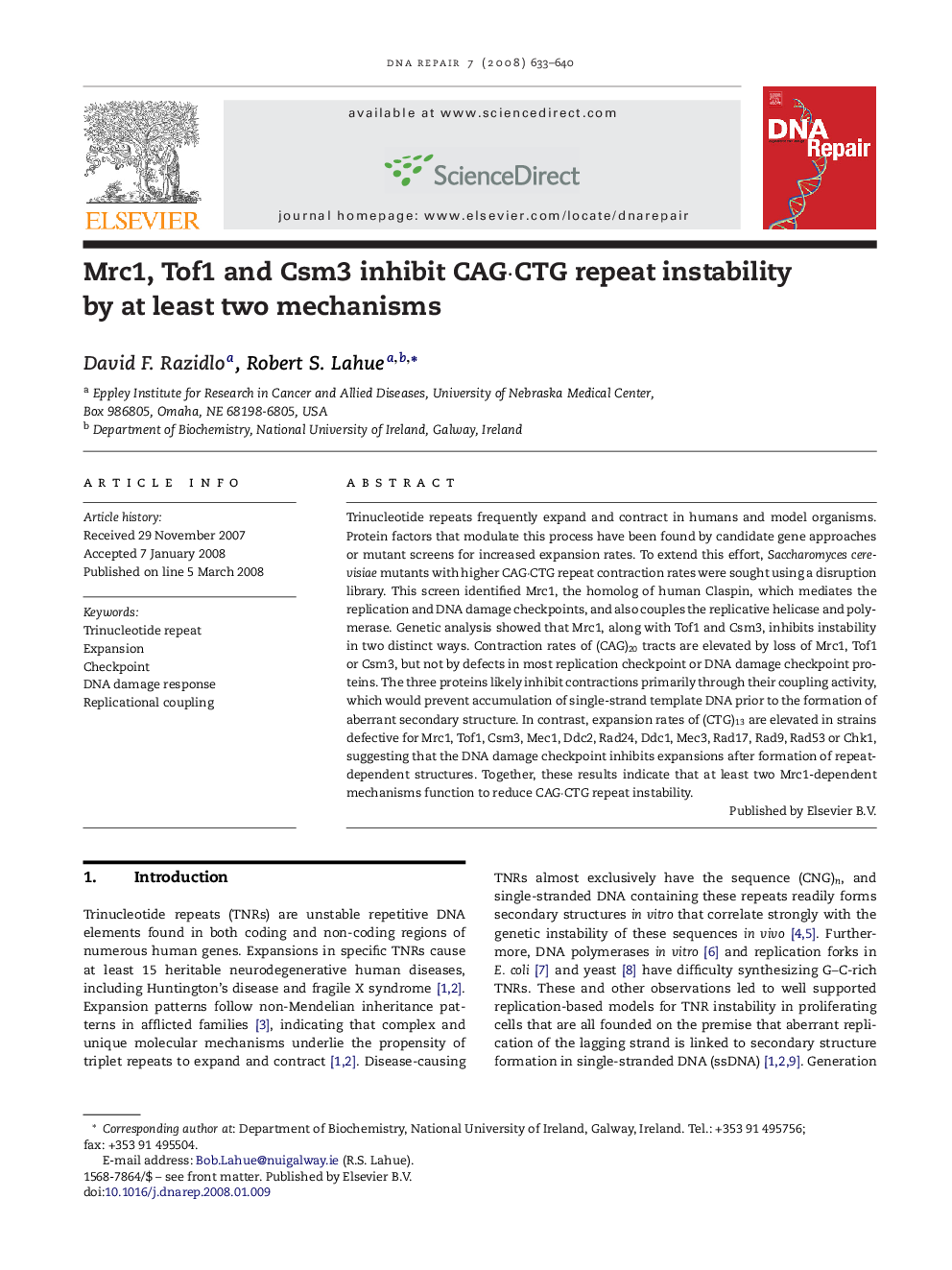| Article ID | Journal | Published Year | Pages | File Type |
|---|---|---|---|---|
| 1980900 | DNA Repair | 2008 | 8 Pages |
Trinucleotide repeats frequently expand and contract in humans and model organisms. Protein factors that modulate this process have been found by candidate gene approaches or mutant screens for increased expansion rates. To extend this effort, Saccharomyces cerevisiae mutants with higher CAG·CTG repeat contraction rates were sought using a disruption library. This screen identified Mrc1, the homolog of human Claspin, which mediates the replication and DNA damage checkpoints, and also couples the replicative helicase and polymerase. Genetic analysis showed that Mrc1, along with Tof1 and Csm3, inhibits instability in two distinct ways. Contraction rates of (CAG)20 tracts are elevated by loss of Mrc1, Tof1 or Csm3, but not by defects in most replication checkpoint or DNA damage checkpoint proteins. The three proteins likely inhibit contractions primarily through their coupling activity, which would prevent accumulation of single-strand template DNA prior to the formation of aberrant secondary structure. In contrast, expansion rates of (CTG)13 are elevated in strains defective for Mrc1, Tof1, Csm3, Mec1, Ddc2, Rad24, Ddc1, Mec3, Rad17, Rad9, Rad53 or Chk1, suggesting that the DNA damage checkpoint inhibits expansions after formation of repeat-dependent structures. Together, these results indicate that at least two Mrc1-dependent mechanisms function to reduce CAG·CTG repeat instability.
